Table of Contents
- What Is a Pasilla Pepper?
- Common Uses in Cooking
- How to Prep & Handle Pasilla Peppers
- 5 Showstopping Pasilla Pepper Recipes
- Buying Guide: Choosing the Best Pasilla Peppers
- Storing and Preserving for Maximum Flavor
- Frequently Asked Questions
- Final Thoughts
What Is a Pasilla Pepper?
If you're just getting into the world of chiles, you might be wondering: what exactly is a pasilla pepper? Often mistaken for its close cousin, the poblano, the pasilla is actually the dried version of the chilaca chili. It's long, wrinkly, and deep blackish-green in color with a rich, earthy flavor profile that includes notes of raisin, tobacco, and coffee.
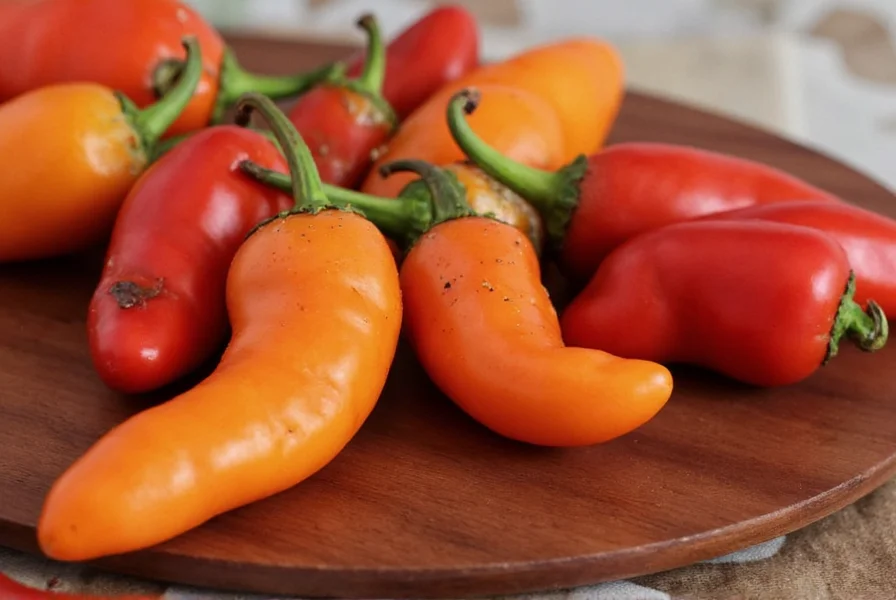
Unlike many hot peppers, the pasilla doesn't hit you with intense heat right away. Instead, it builds slowly, offering a moderate Scoville Heat Unit (SHU) range of about 1,000 to 2,500. That makes it perfect for dishes where you want depth and complexity rather than face-melting spice.
Flavor Profile Comparison
| Pepper | Heat Level (SHU) | Flavor Notes |
|---|---|---|
| Pasilla | 1,000–2,500 | Earthy, smoky, slightly sweet with hints of raisin and tobacco |
| Ancho | 1,000–2,000 | Fruity, mildly spicy, often used in mole sauces |
| Guajillo | 2,500–5,000 | Bright, tangy, with berry-like undertones |
Common Uses in Cooking
The versatility of the pasilla pepper makes it a staple in Mexican cuisine. From sauces to stews to soups, this pepper adds an unforgettable layer of flavor. Here are some classic applications:
- Mole Poblano: A rich, complex sauce that uses pasilla as one of several chiles.
- Chiles Rellenos (when dried): Sometimes used in stuffing or sauce form.
- Soups & Stews: Especially in traditional dishes like pozole or menudo.
- Adobo Sauces: Its earthiness pairs well with vinegar and garlic.
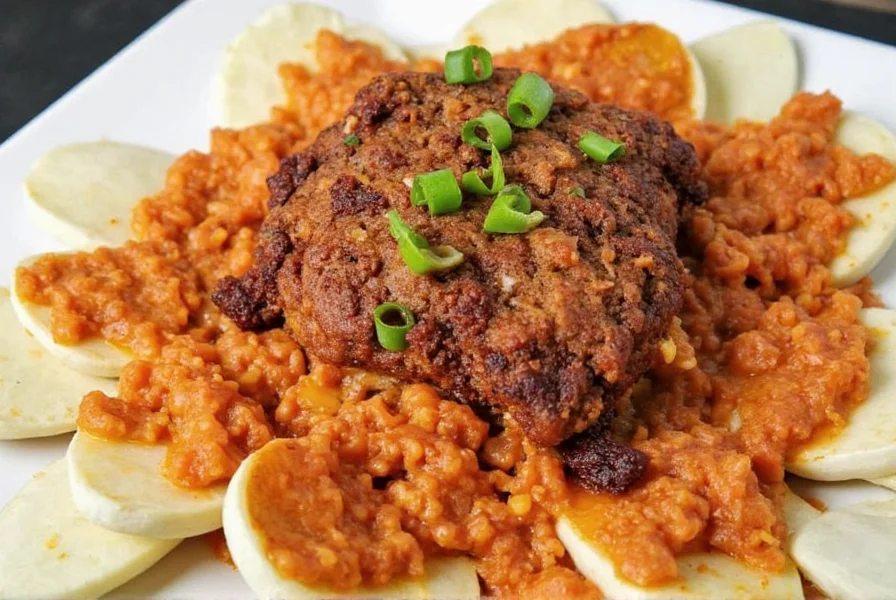
How to Prep & Handle Pasilla Peppers
Proper preparation can make all the difference when working with pasilla peppers. Here's how to get the most out of them:
- Rinse and Inspect: Wipe off any dust or debris before using.
- Toast the Peppers: Briefly toast over an open flame or in a dry pan to unlock deeper flavors.
- Rehydrate: Soak in hot water or broth for 20–30 minutes until soft.
- Remove Seeds: If you prefer less heat, remove the seeds and veins.
- Blend into Sauce: Combine rehydrated peppers with onions, garlic, tomatoes, and spices for a base sauce.
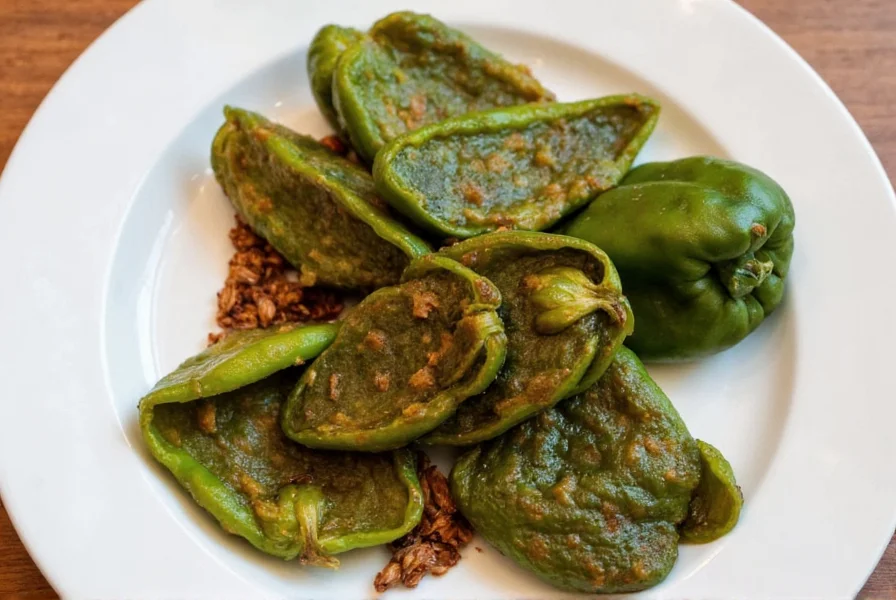
Top Tips for Handling Dried Chiles
- Use gloves if you have sensitive skin to avoid irritation.
- Store unused soaked peppers in the fridge for up to 3 days.
- Freeze leftover puree in ice cube trays for easy future use.
5 Showstopping Pasilla Pepper Recipes
1. Pasilla Chile Mole
A deeply aromatic sauce that brings together chocolate, nuts, spices, and pasilla peppers for a flavor explosion.
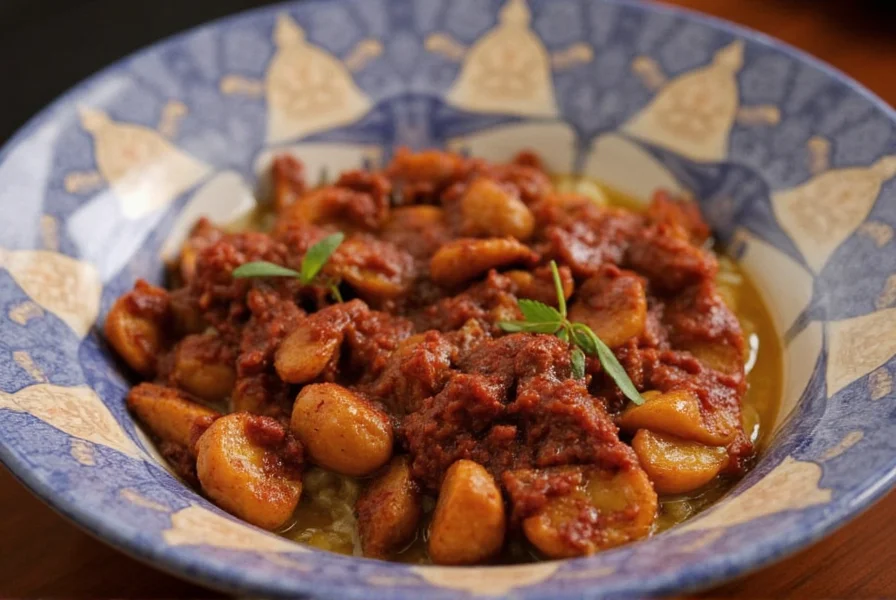
- Ingredients: Pasilla chiles, almonds, sesame seeds, garlic, onion, chicken broth, unsweetened cocoa powder, cinnamon, bread, tomato paste
- Cook Time: ~90 minutes
- Best Served With: Chicken, rice, warm tortillas
2. Smoky Pasilla Bean Soup
This hearty vegetarian soup is packed with fiber, protein, and bold flavor.
- Ingredients: Pasilla chiles, white beans, carrots, celery, cumin, smoked paprika, vegetable stock
- Cook Time: ~45 minutes
- Best Served With: Cornbread, avocado crema
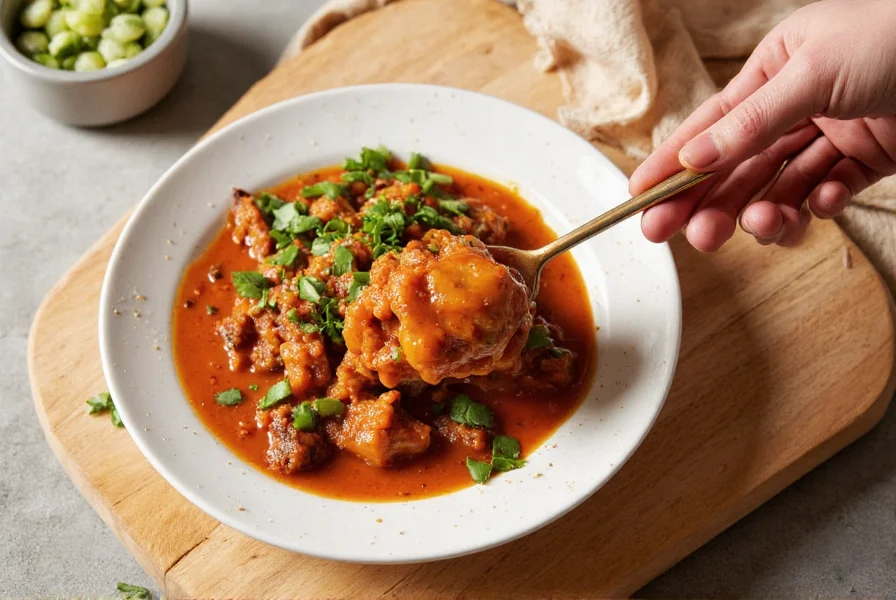
3. Pasilla Chile Enchilada Sauce
Perfect for making enchiladas verdes or red enchiladas without store-bought shortcuts.
- Ingredients: Pasilla chiles, garlic, onion, olive oil, oregano, salt
- Cook Time: ~30 minutes
- Best Served With: Cheese or chicken enchiladas
4. Spiced Pasilla Chocolate Truffles
A surprising but delicious dessert application! The earthy heat plays beautifully with dark chocolate.
- Ingredients: Dark chocolate, pasilla powder, heavy cream, butter, cocoa powder for rolling
- Cook Time: ~20 minutes + chilling time
- Best Served With: Red wine or espresso
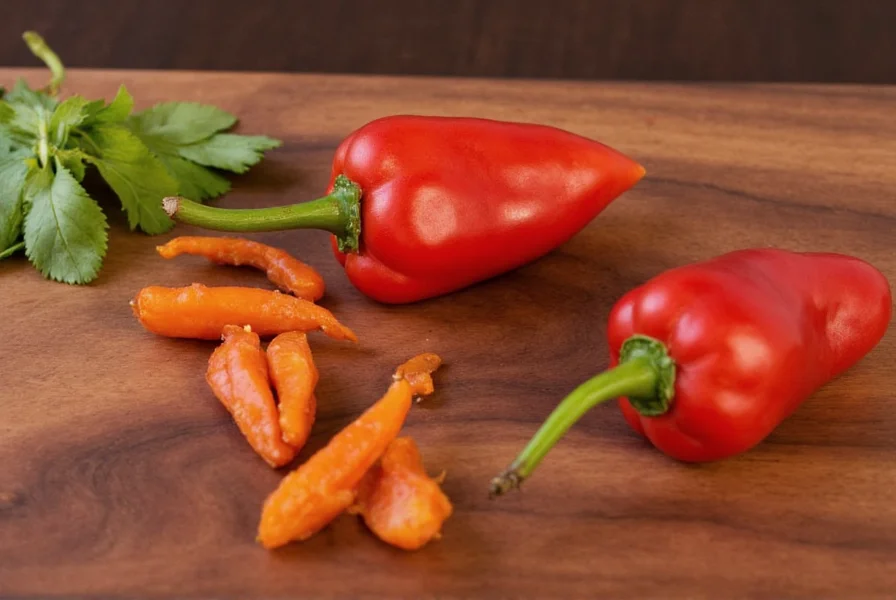
5. Grilled Chicken Tacos with Pasilla Salsa
Add a twist to your taco night with this vibrant and smoky salsa.
- Ingredients: Pasilla chiles, roasted tomatoes, garlic, cilantro, lime juice
- Cook Time: ~25 minutes
- Best Served With: Warm corn tortillas, grilled chicken
Buying Guide: Choosing the Best Pasilla Peppers
When shopping for pasilla peppers, there are a few key factors to consider to ensure quality and flavor. Let's dive into what to look for and some recommended products.
What to Look For
- Color: Should be dark brown to black, almost mahogany-like. Avoid pale or overly brittle specimens.
- Texture: Pliable and slightly leathery. Very dry ones may be past their prime.
- Smell: Rich, earthy aroma. Musty or moldy smells mean they've gone bad.
Top Recommended Brands
| Brand | Features | Best For |
|---|---|---|
| La Costeña | Packaged in convenient bundles, consistent size and flavor | Everyday cooking and beginners |
| El Yucateco | Darker and more intensely flavored than average | Authentic mole lovers |
| Organic Valley Organic Pasilla | Organically grown, sustainable packaging | Health-conscious cooks and eco-friendly kitchens |
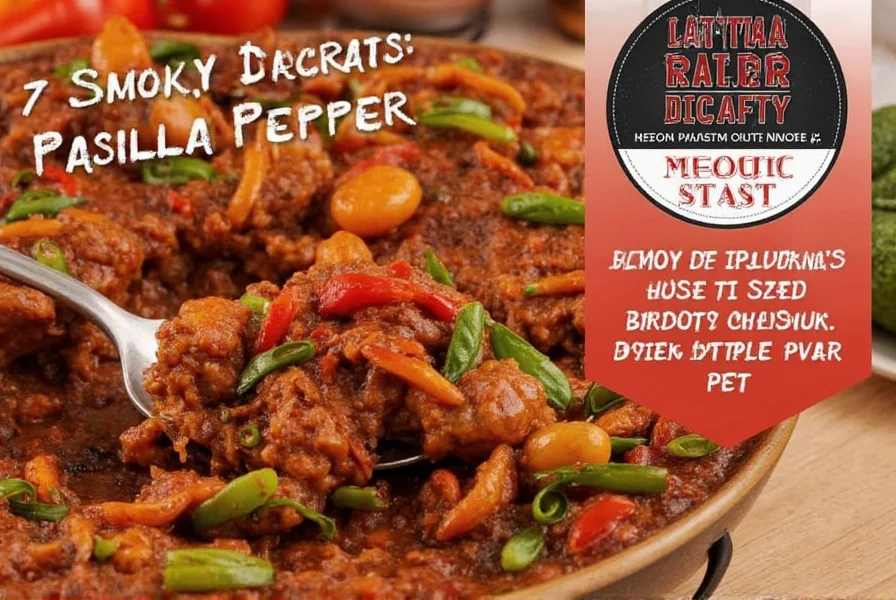
Pre-Packaged vs. Bulk Buying
- Pre-Packaged: Great for convenience and portion control.
- Bulk: Ideal for frequent users or those who want to experiment with large batches.
Storing and Preserving for Maximum Flavor
Proper storage keeps your pasilla peppers tasting fresh and potent. Here's how to do it right:
- Dry Storage: Keep in an airtight container in a cool, dark place for up to 6 months.
- Refrigeration: Store soaked or rehydrated peppers in a sealed bag in the fridge for up to 3 days.
- Freezing: Puree peppers and freeze in portions for quick meal prep.
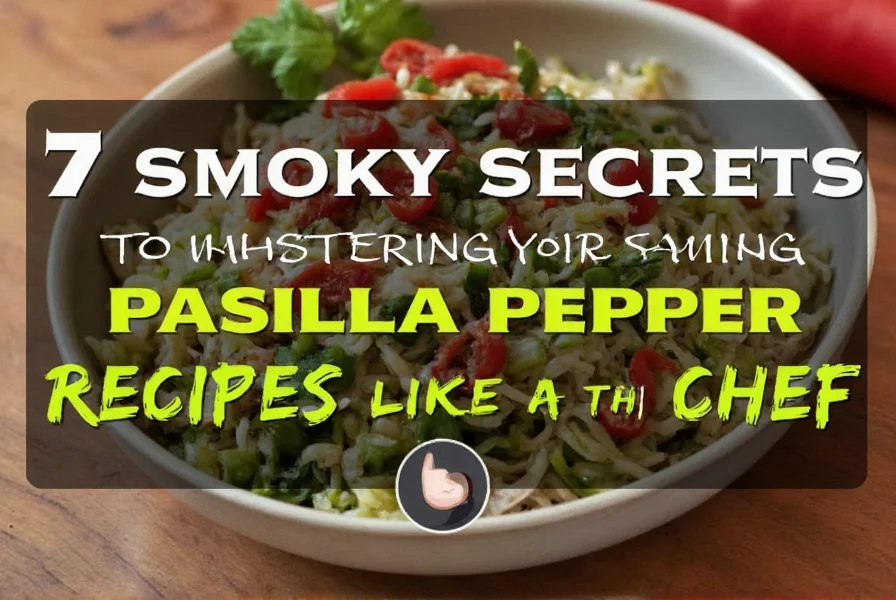
Frequently Asked Questions About Pasilla Peppers
What is the difference between pasilla and poblano peppers?
Pasilla peppers are actually the dried form of chilaca peppers, while poblanos are a different fresh pepper that, when dried, become ancho peppers. Fresh poblanos are wide and heart-shaped, while fresh chilacas (which become pasillas) are long and narrow. Many people confuse them because "pasilla" means "little raisin" and is sometimes incorrectly used to refer to fresh poblanos in some regions.
Can I substitute ancho peppers for pasilla peppers in recipes?
Yes, but with some flavor differences. Ancho peppers (dried poblanos) are fruitier and sweeter with notes of plum and raisin, while pasillas are earthier with tobacco and coffee notes. If substituting, use a 1:1 ratio but consider adding a pinch of smoked paprika to mimic the earthier profile of pasillas. For mole recipes specifically, a combination of ancho and mulato peppers makes the best substitute for pasilla.
How spicy are pasilla peppers on the heat scale?
Pasilla peppers range from 1,000 to 2,500 on the Scoville scale, making them moderately mild. For comparison, a jalapeño ranges from 2,500-8,000 SHU. The heat builds slowly rather than hitting you immediately. Most people find pasillas approachable even if they're not accustomed to spicy foods, especially when the seeds and membranes are removed during preparation.
What's the best way to rehydrate pasilla peppers for recipes?
The best method is to first toast the peppers lightly in a dry skillet for 15-20 seconds per side until fragrant, then submerge them in hot water or broth for 20-30 minutes until soft. Some chefs prefer to add a slice of onion or a clove of garlic to the soaking liquid for extra flavor. Never use boiling water as it can make the peppers bitter. After soaking, reserve the liquid to use in your sauce for additional flavor depth.
Can I use fresh pasilla peppers instead of dried in recipes?
True pasilla peppers are the dried form of chilaca peppers, so there's no "fresh pasilla" - what's sold as fresh is actually chilaca. If you have fresh chilacas, you can use them, but the flavor profile will be different (less complex and earthy). For traditional Mexican recipes calling for pasilla, dried is essential for authentic flavor. If substituting fresh chilacas for dried pasillas, use about 3 times the amount and expect a milder, less complex result.
How can I tell if my dried pasilla peppers have gone bad?
Fresh pasilla peppers should have a deep, rich color (dark brown to black) and a pliable, leathery texture. Signs they've gone bad include: extreme brittleness (snaps instead of bends), mold spots, musty or sour smell (instead of earthy aroma), or visible insects. Properly stored in an airtight container in a cool, dark place, dried pasillas should last 6-12 months at peak quality, though they remain safe to eat beyond that with gradually diminishing flavor.
Final Thoughts
The pasilla pepper is one of those hidden gems in the spice world — subtle yet powerful, complex yet approachable. Whether you're new to cooking with dried chiles or a seasoned pro, there's always something new to discover with the pasilla.
From warming winter soups to decadent desserts, these recipes prove that the pasilla isn't just for main dishes — it can elevate everything from starters to sweets. And with the right buying and storage techniques, you'll never run out of reasons to keep these smoky wonders in your pantry.
Ready to bring some deep, earthy warmth into your kitchen? Grab some pasilla peppers and let your culinary creativity run wild!











 浙公网安备
33010002000092号
浙公网安备
33010002000092号 浙B2-20120091-4
浙B2-20120091-4